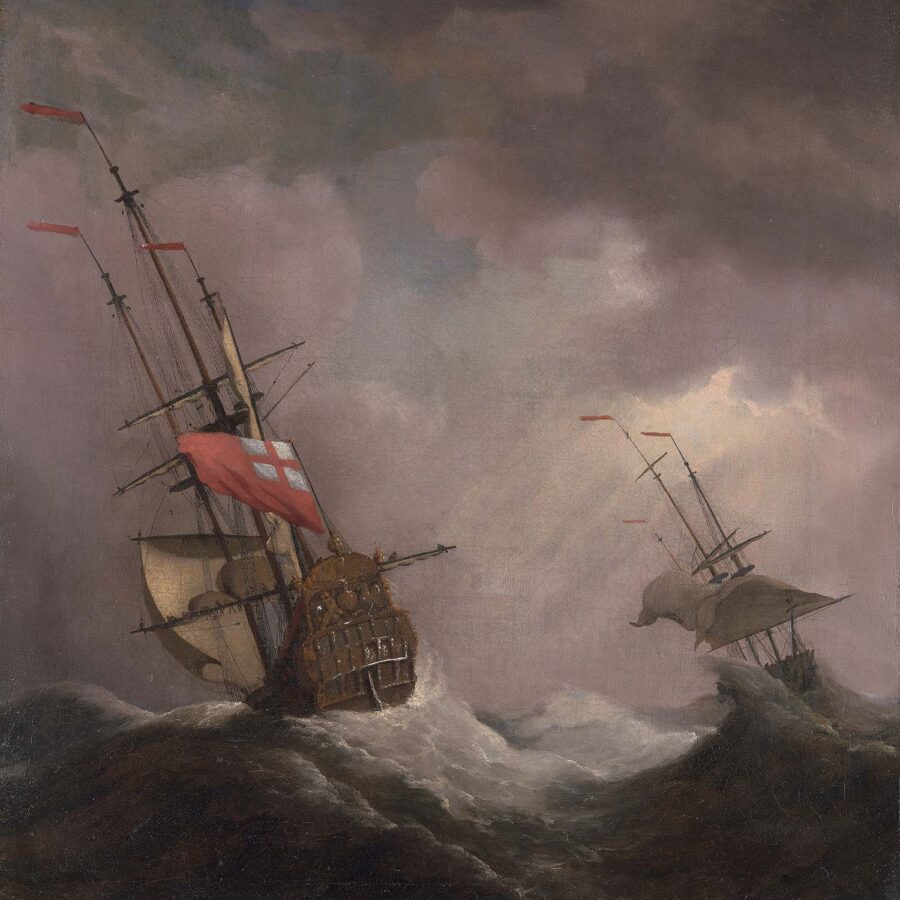

Our Autumn Lecture Series begins on Thursday 19 September with Dr Elaine Murphy’s talk Women and the Navy in the Age of Sail. The lecture will look at the women who went to sea on board men-of-war, examine the women who did business with the navy, and sometimes cheated it, and investigate the position of sailor’s families on shore and how they coped and survived.
Dr Elaine Murphy visited the Museum last year as part of the 2023 lecture series with a talk on female pirates, we’re thrilled to have her back to further uncover women’s historic roles and relationships with the sea. We recently caught up with Dr Murphy to find out more about what to expect from this year’s talk.
From the mid 17th century onward the Royal Navy began to expand considerably and women played a vital role in this expansion – many women worked in dockyards in a range of roles including iron working and painting ships and supplying the yards with stores the men-of-war needed. Women also travelled extensively on board naval warships for a variety of reasons. Women on shore also engaged with the navy in a variety of different and complex ways. Some women had husbands who were at sea and so they needed to support themselves and petitioned the navy and its officials for the husband’s pay. Some women lost their husbands in naval service and struggled to survive. Other women on shore lodged and nursed wounded seamen in their homes before naval hospitals were built. The growth of the navy also provided opportunities for women who stole from dockyards and cheated sailors out of their pay. In my talk I’ll explore some of these areas with a focus on how women in Devon and Cornwall interacted with the navy.
Elite women such as royal and noble ladies travelled by sea on warships as it offered them a relatively safe journey especially if they travelled in pirate infested waters in this period. More ordinary women went on board ships as temporary visitors to see their loved ones or to sell goods and services to sailors such as food, alcohol and sex. Some of these women sailed on board ships for longer periods and a few were present during battles. There were relatively few women on board most naval ships unless it was in port and then large numbers visited. For women at sea some of the greatest issues they faced was a lack of privacy and space in the cramped and male dominated environment of a warship. I’ll speak about these issues and how women dealt with them in my talk
Its hard to know as if a woman successfully concealed her identity then we would not have historical evidence for it. There are a number of cases and I’ll touch on some of the stories of women who dressed as men to go to sea on board men-of-war in my talk.
Women were involved in nearly every area of supply for the Royal Navy – everything from supplying pens and paper to the admiralty office to employing large numbers of workers in dockyards in areas such as sail making, ironmongery and carpentry.
There were few formal supports to help women whose family members were away for years at a time. Women coped as best they could – most worked in a range of jobs from acting as landladies and nurses to turning to activities such as prostitution. Many naval women in this period worked hard to provide for their families and enjoyed good reputations in their communities. Husbands and wives often tried to stay in touch by writing letters to each other and a number of very touching letters survive from the period – even if a couple could not read or write they could pay someone to write a letter for them.
Women can be difficult to find in the historical record and we often only find them when something goes wrong such as when a ship sinks – this is one of the areas I’ll speak about in my talk – how do we find women on ships when sources like ship’s log’s don’t mention their presence.

Dr Elaine Murphy
Dr Elaine Murphy is Associate Professor of Maritime History at the University of Plymouth. She has written extensively on naval history and piracy in the 17th century and her current research focuses on women and the early modern navy.
£8 per person, £5 students, 10% off for NMMC Members
£6 per person for the online webinar
Women and the Navy in the Age of Sail is part of National Maritime Museum Cornwall’s 2024 lecture series. Other lectures in this series include:

National Maritime
Museum Cornwall Trust
Discovery Quay
Falmouth Cornwall
TR11 3QY
View Map
See our opening hours
Tel: +44(0)1326 313388
Email: enquiries@nmmc.co.uk